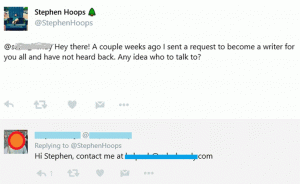
If you’re a startup ready to launch your first product or a brand new product, you’re most likely going to send a press release. And if you don’t have a designated PR person or team, it’s easy to become stressed over crafting and distributing your first release. Effectively communicating your startup’s message via a press release is a really great way to gain more users and make journalists aware of your product, so it’s important to take your time to do it right.
The first release is important because, unless you have done previous PR efforts, it’s your debut to the world of media coverage. This is your chance to tell why your product is important, necessary, and worthy of future media opportunities.

Crafting a Startup Press Release
The biggest mistake I see (often) is writing a press release that is far too long. This is problematic because 1. Journalists don’t want to read a super long release and 2. Wires charge more for longer releases, so it’s an expensive mistake.
While there are many templates online, here is a great way to structure your press release:
Title: Company Announces New Platform For Industry
Sub-header: A bit more information about the announcement that couldn’t fit in the headline
First Paragraph: This is the who, what, where, when, why, and how. Include data points if you can to really catch the reader. After you answer the 5 W and How questions, you’ll have a pretty full paragraph.
Second Paragraph: Go into more specifics of your company and the announcement. You can get a little more technical (not too much, though) and explain what this announcement means for the user.
Third Paragraph: Quote paragraph! This is a quote from your CEO or Co-Founder and a quote from any other company involved (if it’s a merger or partnership, both companies will be quoted). The quote should be upbeat and talk about how this announcement will benefit the market.
Fourth Paragraph: Include 1-2 lines about how this announcement is relevant to the market and talk about what your company plans on doing in the future (hint out future plans or releases).
Boilerplate: This is the history of your company, background of the founders, funding information, etc.
Always remember to keep it short and clean. If you go over roughly 500 words, you’ll end up paying a lot extra, and most likely some of that information isn’t relevant. Once you have your release and release date, you’re ready to go.
Releasing a Press Release on the Wire
Sending a release via Business Wire, PR Newswire, or any other wire service will get your press release seen by a multitude of journalists at one time. But, it’ll cost you.

Prices range from $ 100 to upwards of $ 1,000 per press release. Depending on what services you want (including a video, including multiple images, sending it to specific reporters, etc), the prices can easily increase. While there are free wire services, they aren’t really worth the effort. If you want to use a wire service, be prepared to pay for it.
For first timers, loading a press release up can be time-consuming. Always load the release as early as possible so you can get approval from any other company or organizations mentioned in the release (they will need to email the wire saying they approve the content, and then schedule for 6am ET the day of your release. It will then be sent out to thousands of publications, where reporters will be able to decide whether or not they want to cover the story and can contact you via the information given in the release.
Pitching Your Press Release
Unfortunately, unless you’re Google or Microsoft, you can’t just send your release on the wire and wait for reporters to contact you, you’re going to have to do more work.
You should manually (or using a reporter contact database, if you have access to one) create a media list of reporters that cover your competition, industry, and relative topics that you want to email and call about your news.
If you’re really set on getting one reporter the news to cover, you can give them an exclusive. This means they are the only ones that have the news before the press release goes live. They are going to break the news and be the first to report on your story. You should only give one reporter the exclusive. If you try to give everyone the exclusive and journalists find out, they can refuse to cover any future news. Don’t make them mad!

If you want to give a few reporters the news early, you can send the news under embargo. You can email reporters making it clear that the news is under embargo until a certain date (meaning they can’t release their stories until that time), and offer interviews with the company founder beforehand so that they are all set to release their story the day your announcement comes out. Beware: Reporters can break embargoes aka release your story beforehand. While this is frowned upon, it happens, and it’s a risk you’ll have to take.
Having made your media list, you should then email reporters individually the morning of your release with a media pitch (or a short paragraph explaining why this news is interesting and relevant to them) and the release. You can offer interviews, more data points, and any other hook your company has to get some coverage.
Then send away!
After the Press Release Goes Live
Congratulations, you’re almost there! After the release goes live, you can call reporters to gauge their interest in your story. Beware: Some reporters HATE being called and may not be nice on the phone (though, think about how many emails and calls they get per day), so bear that in mind.
You can always follow up via email, and if they are not interested they may let you know or may simply not respond.
Hopefully you’ve gotten some interviews and some stories, so keep following up with reporters to get your story out there and breathe easy, because you just survived your first press release.
Business & Finance Articles on Business 2 Community(75)




